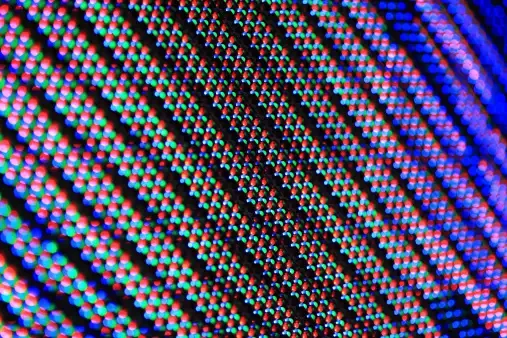
Get a Quote
How Does High Temperature Affect LED Displays?
Impact on Brightness and Color Accuracy
Sensitivity of LEDs to Temperature Variations
LEDs are highly sensitive to changes in temperature. When subjected to high temperatures, the efficiency and light output of LEDs can decrease, impacting their overall performance. This sensitivity makes it crucial to monitor and control the operating temperature of LED displays to maintain optimal brightness and color accuracy.
Diminished Brightness Due to High Temperature
High temperatures can lead to a reduction in the brightness of LED displays. As the temperature rises, the luminous efficacy of LEDs decreases, resulting in dimmer visuals. This decrease in brightness can affect the visibility and effectiveness of the display, especially in outdoor settings or bright environments.
Effects on Color Accuracy and Representation
In addition to brightness, high temperature can also affect the color accuracy and representation of LED displays. Changes in temperature can alter the color temperature of LEDs, leading to inaccuracies in color reproduction. This can result in distorted or washed-out colors, impacting the overall visual quality of the display.
Thermal Management Challenges
Generation of Heat by LEDs
LEDs generate heat during operation, which can accumulate and cause thermal stress on the display components. The higher the operating temperature, the greater the heat generated by the LEDs. Without effective heat dissipation mechanisms, this heat can lead to performance issues and reduce the lifespan of the display.
Importance of Effective Heat Dissipation
Effective heat dissipation is crucial for maintaining the optimal operating temperature of LED displays. Heat dissipation mechanisms such as heat sinks, fans, and ventilation systems help to remove excess heat from the display, preventing overheating and ensuring consistent performance. Proper thermal management is essential for maximizing the reliability and longevity of LED displays.
Challenges in Maintaining Optimal Operating Temperatures
Maintaining optimal operating temperatures can be challenging, especially in environments with high ambient temperatures or poor ventilation. Factors such as the design of the display, the intensity of use, and external conditions can all impact the effectiveness of thermal management systems. Overcoming these challenges requires careful planning and implementation of appropriate heat dissipation strategies.
Efficiency and Power Consumption
Decreased Efficiency at Higher Temperatures
As temperatures rise, the efficiency of LED displays tends to decrease. This decline in efficiency is primarily due to the sensitivity of LEDs to temperature variations. Higher temperatures can lead to reduced light output and increased energy consumption, diminishing the overall efficiency of the display.
Influence on Power Consumption and Operating Costs
The decrease in efficiency at higher temperatures results in increased power consumption by LED displays. As the display works harder to maintain optimal brightness levels, it consumes more energy, leading to higher operating costs. These increased energy expenses can significantly impact the overall budget for operating and maintaining LED display systems.
Increased Driving Currents and Their Implications
To compensate for decreased brightness caused by high temperatures, LED displays may require higher driving currents. These increased currents put additional stress on the LED components, potentially shortening their lifespan. Moreover, higher driving currents can lead to overheating and further exacerbate efficiency issues, creating a cycle of increased power consumption and decreased performance.
Reliability and Durability Concerns

Accelerated Degradation and Reduced Lifespan
High temperatures can accelerate the degradation of LED components, resulting in a reduced lifespan for the display. The prolonged exposure to heat can cause the materials to deteriorate faster, leading to a decline in performance and reliability over time. This accelerated degradation poses significant concerns for the long-term durability of LED displays.
Impact on Other Components and Systems
In addition to the LEDs themselves, high temperatures can also affect other components and systems within the display. Control circuits, power supplies, and cooling mechanisms are all susceptible to thermal stress, which can lead to malfunctions or failures. The cumulative impact of heat on these components can compromise the overall reliability and functionality of the display.
Risks of Component Failures and Downtime
Perhaps most concerning is the risk of component failures and downtime associated with high temperatures. Malfunctioning LEDs, damaged control circuits, or overheated power supplies can all lead to unplanned downtime, disrupting operations and potentially causing financial losses. Minimizing these risks requires proactive maintenance and effective thermal management strategies to ensure the reliability and uptime of LED displays.
Mitigation Strategies
Importance of Implementing Thermal Design
Effective thermal design is essential for mitigating the impact of high temperatures on LED displays. This involves the strategic placement of heat sinks, thermal pads, and other cooling mechanisms to dissipate heat efficiently. By optimizing thermal design, the risk of overheating and component failures can be significantly reduced, ensuring the longevity and reliability of the display.
Active Cooling Techniques for Temperature Reduction
Active cooling techniques, such as fans or liquid cooling systems, can be employed to reduce the temperature of LED displays. These systems actively remove heat from the display, preventing overheating and maintaining optimal operating temperatures. By incorporating active cooling techniques, LED displays can operate more efficiently and reliably, even in high-temperature environments.
Ensuring Adequate Ventilation and Air Circulation
Proper ventilation and air circulation are crucial for preventing heat buildup in LED displays. Adequate airflow around the display helps dissipate heat and maintain a consistent operating temperature. This can be achieved through strategic placement of vents, fans, and air ducts, ensuring that hot air is efficiently expelled from the display enclosure.
Monitoring and Controlling Ambient Temperature
Monitoring and controlling the ambient temperature surrounding LED displays is vital for preventing overheating. In outdoor settings, protective enclosures and shading can help shield the display from direct sunlight and extreme weather conditions. In indoor environments, temperature monitoring systems can be implemented to ensure that the ambient temperature remains within acceptable limits.
Utilizing High-Quality Thermal Management Materials
Using high-quality thermal management materials, such as thermal interface materials (TIMs), is essential for optimizing heat transfer and enhancing the reliability of LED displays. These materials help reduce the overall thermal resistance of the display, allowing for better heat dissipation and temperature regulation. By utilizing high-quality thermal management materials, the performance and longevity of LED displays can be maximized, providing users with a reliable and durable display solution.
Conclusion
High temperatures can have detrimental effects on the performance, reliability, and longevity of LED displays. From decreased brightness and color accuracy to accelerated degradation and component failures, the impact of heat on LED displays is significant. It is imperative for businesses and individuals alike to understand these effects and take proactive measures to mitigate them.
For those seeking high-quality LED display solutions, we invite you to explore EACHINLED. Our range of LED displays and accessories is designed to meet the needs of diverse applications, ensuring superior performance and durability. Visit our website to learn more and discover how EACHINLED can enhance your LED display experience.

